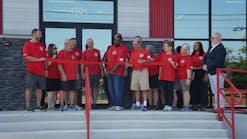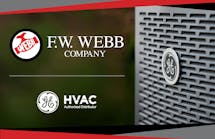HVAC professionals – distributors and contractors alike – face a daily dilemma whether serving customers via telephone, face-to-face or written correspondence. This dilemma is not driven by malice or deceit. Most often it is simply the natural progression of the sales and service process. A sales or service transaction may be moving ahead smoothly when the customer stops to ask a question about the product, service or company policies.
Then anxiety builds up inside. You would prefer to say “Yes” or “Certainly, our product can do that,” or “I can ship it today.” But you will not utter any of those phrases today because you must speak the truth.
The quandary of which I write is about how to say “No.” Saying “No” might make you feel unpopular or appear like a killjoy. Conveying seemingly bad news to someone else might bring to an end all of the goodwill that you have been creating while attempting to negotiate a sale or provide a service. Regardless of how an HVAC professional might feel personally about having to say “No” to a customer, sometimes the answer must be “No.”
What separates the seasoned professionals from amateurs in the sales and service businesses are three distinct behaviors:
- Knowing when to say “No.”
- Knowing why to say “No.”
- Knowing how to say “No.”
The first key behavior involves a sense of timing and good listening skills. Most service professionals have an instinctual sense when dealing with a customer that they must respond in the negative. This “sixth sense” triggers our response to provide an immediate answer. Our reply is communicated without any pause whatsoever on the heels of the customer inquiry.
This is not an acceptable reaction since timing is a vital communication skill. We should allow ourselves a moment or two to formulate a qualifying question in order to ascertain the importance of the criteria. As an example, if a customer were to ask “Can you get here this morning?” you might qualify your answer by conveying a helpful attitude and asking a subtle question. Perhaps, something like this: “May I just have a minute to research our schedule? And just so I know, might there be an afternoon time that also works?”
Your question conveys helpfulness and qualifies the criteria required to achieve customer satisfaction.
In this illustration, the technical answer to the question may be “No.” However, with a pause, and some time to formulate a rational response – and a bit of finesse – a much more creative answer surfaced.
There will be instances when the consequences of doing what a customer requests will outweigh any benefits. One such case might arise when a service professional risks the stability of his fulfillment system in order to satisfy the request of a specific customer. In said circumstance, it is important
that the customer understands why you cannot carry out their request. Any explanation must include the final key behavior: knowing how to say “No.”
The concept of knowing how to say “No” begins with an adherence to the fundamental principle of saying what you can do rather than what you cannot do. When a service professional conveys what they can do, it keeps the proverbial door open so that the dialogue with the customer may continue. However, when a service professional resorts to what he cannot do, it threatens to limit future dialogue as well as a business relationship.
One of my clients has, with a simple phrase, heightened their service vernacular and the satisfaction of their customers. That phrase is: “Here’s what I can do.”
This axiom is posted in the workstation of each of their customer service representatives, to keep it at the forefront of their minds. It produces two key benefits: it keeps the door open and it gives the service representative something to say while he thinks creatively about how to respond to customer demands.
When it comes to keeping customers satisfied and the door of business opportunities open, a little time may make all the difference.
The most successful distributors hire Steve Coscia to train their dealers and contractors in Customer Service and Soft Skills. Call Steve at 610/853- 9836 or e-mail him at [email protected] to learn more about his speeches and seminars. Visit www.coscia.com to download a free 60 page e-book.










